Samsø,Denmark 作者: 来源: 发布时间:2021-04-14
一、人口,面积,所属地区
Population: 3,657
Area: 114 km²
Municipality in Midtjylland
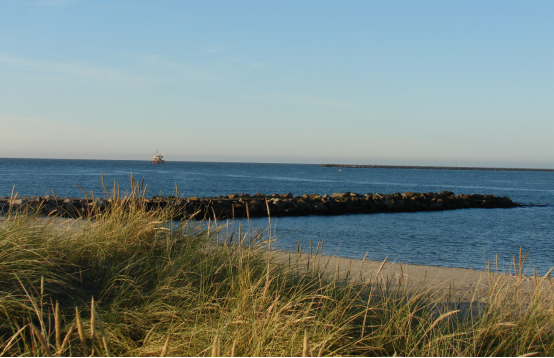
二、自然地理(地理环境、自然资源、交通情况)
Samsø municipality is a municipality in the region of Midtjylland in Denmark.
Samsø municipality covers an area of 114.71 km² in the Kattegat sea, between the Danish mainland of Jutland and Zealand and comprise the island of Samsø and a number of small surrounding islands.
Since Samsø is an island municipality, Odder to the west in Jutland is the only neighbouring municipality. To the east is the strait of Samsø Bælt, separating Samsø from Zealand.
In 1997, Samsø won a government competition to become a model renewable energy community. Now 100% of its electricity comes from wind power and biomass.
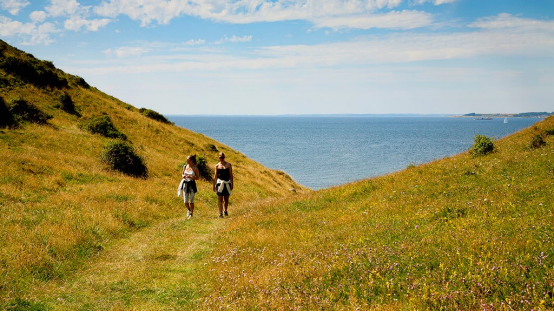
Ferry services connects the town of Sælvig to the town of Hov in Odder Municipality, and at the town of Kolby Kås to the city of Kalundborg on Zealand.
The island is popular among French, Welsh and Irish people for strawberry picking during the months of June and July every year. In Denmark, the island is well known for its early harvest of new potatoes. The first few pounds of these potatoes usually fetch prices around £100, and are considered a great delicacy. Ballen's beach and village are popular with visitors.
The island is served by a bus service which runs around the island, including the two ferry terminals in Sælvig and Ballen. In clear weather, the peninsula of Helgenæs to the north is visible.
Geographically, the island divides into three areas:
the North Island
the Stavns Fjord
the South Island
The North Island is divided from the South Island by the artificial Kanhave canal. Here a larger part of the countryside is uncultivated and it presents a wavy landscape of meadows and small patches of woodland and heath. Like the rest of Samsø, the coastline is characterized by steep cliffs and stony beaches, with some sandy beaches in between suited for bathing. Issehoved is Samsø's norternmost point and presents what have been described as a miniature of Skagens "Grenen". The small towns of Nordby, Mårup and Langør is situated on the North Island. Just north of Nordby is the worlds biggest permanent labyrinth named 'Labyrinten', founded in the year 2000. It comprise a 60,000-square-metre patch of conifer woodland, grown on a previous christmas tree plantation. Northwest of Nordby, is the hill of Ballebjerg, Samsøs highest point. Near the village of Mårup is the harbour of Mårup Havn. In the summer months (17 June to 22 August) the old wooden freight-ship M/S Tunø, ferry passengers back and forth from here to the island of Tunø just west of Samsø, two days a week. Other two days of the week, the same boat is offering seal-safaris from Langør at Stavns Fjord.
The shallow lagoon of Stavns Fjord, houses most of the smaller islands of Samsø municipality. The largest of them is Hjortholm and most of the rest are just small islets really, but have been named individually. The lagoon is separated from the sea of Kattegat by the 7 km long sandbar of Besser Rev. It is possible to walk on the reef all the way to the tip at low tide (ebb), except when the birds are breeding here. It is important to be aware of the tides, as there can be strong and dangerous currents at the reefs junction to Samsø during high tide (flow). East of Stavns Fjord, in Kattegat, lies a group of small islands (Kyholm, Lindholm, Rumpen, Vejrø) with a couple of sandbars. The entire area is to be protected.
The South Island is home to the seat of the mayor and samsøs largest town Tranebjerg, but there are many other hamlets and villages (18 in all) spread across the countryside. The village of Ballen, lies on the east coast and is also home to the Energy Academy. Most of the land on the South Island is cultivated, but there are spots of nature like the forest Brattingsborg Skov and the cliffs, shrubs and beach meadows on the southcoast. Just south of the Kanhave canal is Samsø Airport.
三、经济发展和规模
Samsø Municipality's budget for 2020 is a total of DKK 484 million.
Samsø Municipality's accounts for 2018 show a total result of approx. 10million. DKK - a result which is approx.2 million DKK better than originally budgeted profits of DKK 8.4 million. That is a continuation of that trend which the municipality has followed in recent years, with economically reasonable budgets and close follow-up on deviations from the budget. So it is operating profit of approx. 18 million DKK - approx. 9 million greater than that corrected budget - there is the reason for the development that allows make construction investments and pay off the municipal debt.
Print percentage: 26% (national average is 24.91)
Basic debt profile: 30.75 (national average is 26.13)
Church tax: 1.3% (national average is 0.87)
四、产业特点重点项目
Sustainable production and agriculture
Ecological agriculture and production is significant on Samsø, with a broad network of cooperating associations. It comprise farming of a large variety of vegetables, grains and fruits, livestock meat and products (lambs, sheep, yarn, cows, pigs, horses, donkeys, goats, chickens, eggs), a dairy, a brewery, restaurants and cafés, candy production, permaculture and forest garden experiments. There are several plans for extending the overall ecological production and broaden the industry (a slaughterhouse, orangery, forest gardens and education), with a wish for creating more jobs and stimulate settlements on the island.
Renewable energy
In 1997, Samsø won a government competition to become a model renewable energy community. At the time Samsø was entirely dependent on oil and coal, both of which it imported from the mainland.
An offshore wind farm comprising 10 turbines (making a total of 21 altogether including land-based windmills), was completed, funded by the islanders. The people of Samsø heat their homes with straw burned in a central heating system and they power some vehicles on biofuel which they also grow. Now 100% of its electricity comes from wind power and 75% of its heat comes from solar power and biomass energy. An Energy Academy has opened in Ballen, with a visitor education center. The academy is currently working towards making Samsø 100% fossil fuel free.
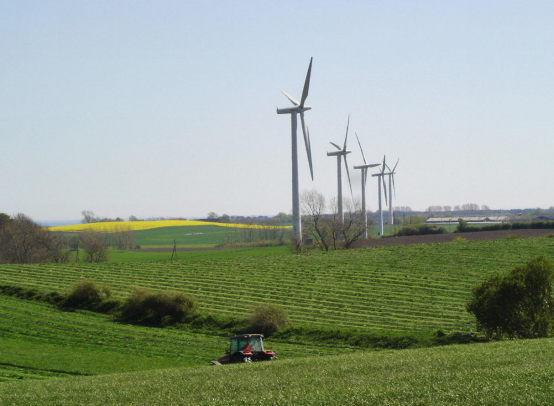
Five focus areas:
Strengthen business development in the four islands by establishing and further developing smaller companies (fewer than 50 employees), including renewable energy.
developing coastal and adventure tourism.
Strengthen the development of local foods and supplements, including the creation of new workplaces and products.
strengthening and highlighting the qualities of the four islands as settlement areas.
support the development of infrastructure, including IT infrastructure.
Key Projects:
NEW CROPS AND EXPERIENCE PRODUCTS
Schedule: 2019 and 2020
Work is being done on identifying new crops as well as developing new products andproduction concepts. This is done by jointly motivating and inspiringeach other in networks and associations for knowledge sharing and oncreate innovation in individual companies. There will be focus on deploy-is looking for a cementing of Samsø's potato brandsand vegetable production as well as renewable energy and sustainability. Who will inthe period is based on the 17 world goals and biocircular value sets.
BALLEN CITY AND BALLEN MARINA
Schedule: Commenced 2017 and expected to be completed by 2020
The ball is an extremely popular tourist destination with many visitors during the season.There is potential for further growth and development of the city, among other thingsutilization of a new area established in connection with a new south pier. infrastructurethe ride in the Ball is severely strained. Thus, a holistic approach is needed.planning for the city's infrastructure, which also focuses on new onesparking spaces for both cars and buses.
五、风景名胜,景点
Samsø Museum
Address: Museumvej 5, Tranebjerg, 8305, Samsø
Samsø Museum communicates Samsø's cultural history through exhibitions and activities.
The museum center is located in a former 1911 dairy - and here it is obvious to start a visit to the museum.
Here you can experience an exhibition about Samsø in the Viking Age, an introductory film to Samsø's history and then you can shop local crafts in the museum shop, where we also have a wide selection of books on nature, history, anthropology and of course Samsø.
In the dairy is also an exciting activity center for children, which we call the History Universe . Here, children can learn about a number of historical periods and monuments through colorful tales and hands-on experiments.
Just 50 meters from the dairy is Samsø Museumgaard , where you can experience a historical farming environment from the 1850s, as it looked on Samsø.
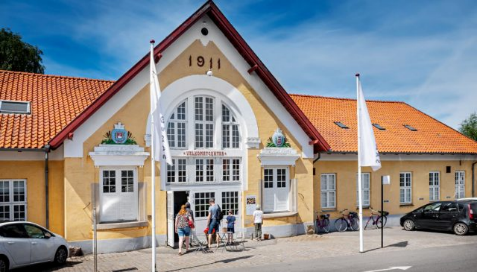
Vesborg Lighthouse
Address: Vesborg Lighthouse 1, 8305, Samsø
The Vesborg Lighthouse is located on what was, in the Middle Ages, one of the country's largest sites of violence - Valdemar Atterdag's castle. The Borgbanken has been an impressive building, and in the lighthouse and the associated gunpowder you can feel the greatness yourself.
The fortress was strategically placed on a high hill at the southwest point of the island. From here you can monitor a good part of the southern Kattegat and the entrance to both the Little and Great Belt.
Vesborg Violence consists of a main bank protected by impressive three ramparts and moat. These are up to 10.5 m deep and 20 m wide. Soil from the trenches was used to raise both the main bank and the ramparts. Today, a large part of the main bank is broken by sea erosion.
Exhibition in the Krudthuset and the Lighthouse
After five seasons of research and archaeological excavations on the Sami medieval castles, the Samsø Museum made an exhibition in 2013 about Samsø's medieval castles in the small gun house in Vesborg. Large posters tell about each of the 5 castles, and on a map of Samsø from 1858 all the castles are drawn, and a poster tells about Samsø's role in national history in the Middle Ages. A plaque in the gunpowder also tells the story of the Vesborg Lighthouse, which was erected on the site in 1858.
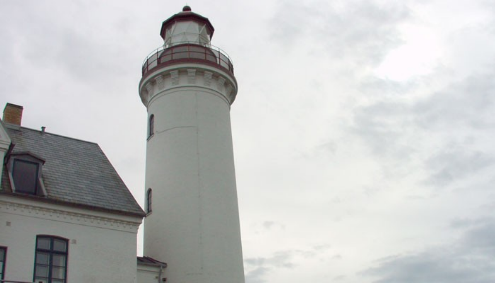
六、历史文化
The etymology of the island's name is unknown.
People have lived and hunted on Samsø from the earliest of times, when the ice receded at the end of the last Ice Age. Samsø first became an island for approximately 9,000 years ago and there are several traces like dolmens, burial mounds, passage graves, kitchen middens, etc. from the Stone Age and Bronze Age cultures across the landscape.
Norse mythology
On this island, Saxo Grammaticus relates that there was a legendary battle, when the Swedish champion Hjalmar and his friend Orvar-Odd fought against the twelve sons of the Swedish berserker Arngrim. This battle was once famous, since it also figures in Faroese ballads, in Orvar-Odd's saga and in Hervarar saga.
According to the Hervarar saga and the Waking of Angantyr, the mounds of the slain berserkers were haunted. This did not stop Arngrim's granddaughter Hervor from approaching the mounds and demanding the enchanted sword Tyrfing from her father Angantyr.
"Samsey" (-ey being an earlier Norse form of -ø) is the island upon which Odin, under the name Jalk, learned Seid magic.
Kanhave canal
At its narrowest place, a canal has been dug across the island. The canal is about 500 m long and 11 m wide and could in its time be navigated by vessels with a draught of up to 1 m. It was dug and clad with wooden linings in the years 726-729 AD; the last part of the Scandinavian Iron Age. Kanhave canal is one of the largest known engineering projects of the Vikings and it is a sign of the centralized power of the time. Kanhave canal is thought of as instrumental to dominating the sea of Kattegat.
Medieval fortresses
All the known sources suggests, that the island was the property of the crown throughout medieval times, but it was an age of conflict and insecurity nevertheless, as a total of five fortresses were built on Samsø in the Middle Ages; Vesborg where the lighthouse is nowadays, Gammel Brattingsborg where the town of Tranebjerg is now, Hjortholm on the islet of the same name in the Stavns Fjord lagoon, Bisgård at the bishop's palace in the parish of Onsbjerg and the small fortification of Blafferholm in the garden of Brattingsborg manor. None of them are left standing today. Only the castle hills and the archaeological excavations of the foundations remains. The National Museum of Denmark initiated thorough archaeological investigations of the fortification sites a few years ago and the field work terminated in 2012.
The quarantine of Kyholm
From 1831-1857 there was a plague- and cholera-quarantine on the tiny island of Kyholm just east of Samsø. Here, ships returning from long voyages had to dock, if they had disease on board. There is an abandoned cemetery of around 100 graves on the island. Kyholm is accessible year round, but it is advised not to be around, when the birds are breeding.
Due to its central location, the island was used during the Viking Age as a meeting place.
Samsø municipality was not merged with other municipalities by 1 January 2007, as the result of the nationwide reform Kommunalreformen ("The Municipal Reform" of 2007).
Important Years in History
726: The Kanhav Canal is being built
1184: King Knud VI holds a large "Noble gathering" on Samsø
1449: Christian I donates Queen Dorethea Samsø as a life pike
1546: The income from Samsø is given to the captured King Christian II for his support at Sønderborg Castle
1661: Joachim Gersdorff receives Samsø as compensation for the goods he lost in Skåne as a result of the war with Sweden
1674: Peder Griffenfeld buys Samsø and calls himself Greve to Samsø
1676: Christian V assigns Samsø to Sophie Amalie Moth, who is elevated to Countess of Samsø
1801: Kyholm, Lilleør and Besser Rev are fortified
1831: The quarantine station at Kyholm is established
1879: Holger Drachmann visits Samsø (Samsø's first tourist)
1900: Samsø gets a telephone connection to the mainland
1936: First passenger route between Hov and Selvig
1962: Samsø's five parishes are merged into Samsø municipality
1967: Ferry route Selvig - Hov all year
1989: The first Samsø Festival
1997: Samsø is named Renewable Energy Island
2007: Opening of Samsø Energy Academy
2010: The regent couple visits Samsø
2015: The Dutch royal couple and the Danish Crown Prince couple visit Samsø.
七、联系方式
Mayor: Marcel Meijer
Address: Søtofte 10, Tranebjerg, 8305 Samsø
Telephone: 87 92 22 00
mail: kommune@samsoe.dk
Facebook: https://www.facebook.com/samsoekommune/
Website: https://www.samsoe.dk/
